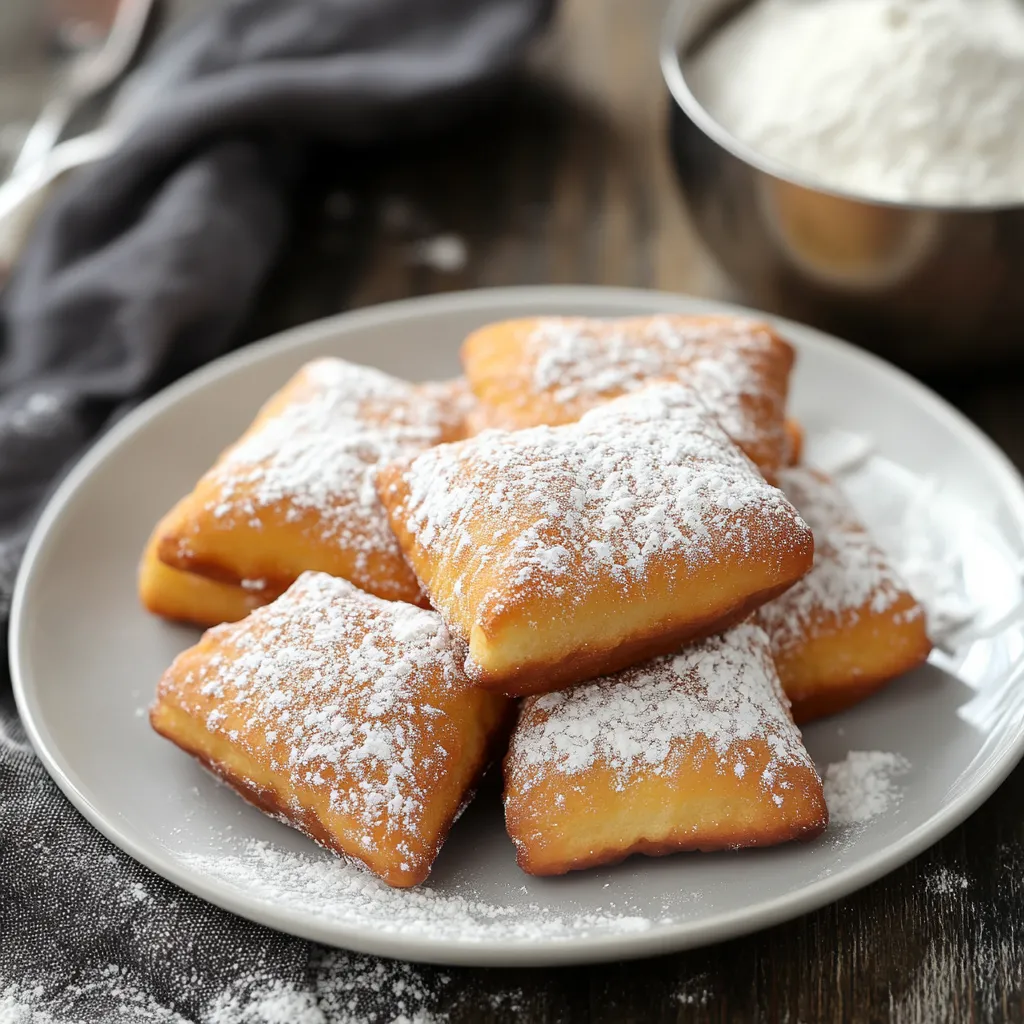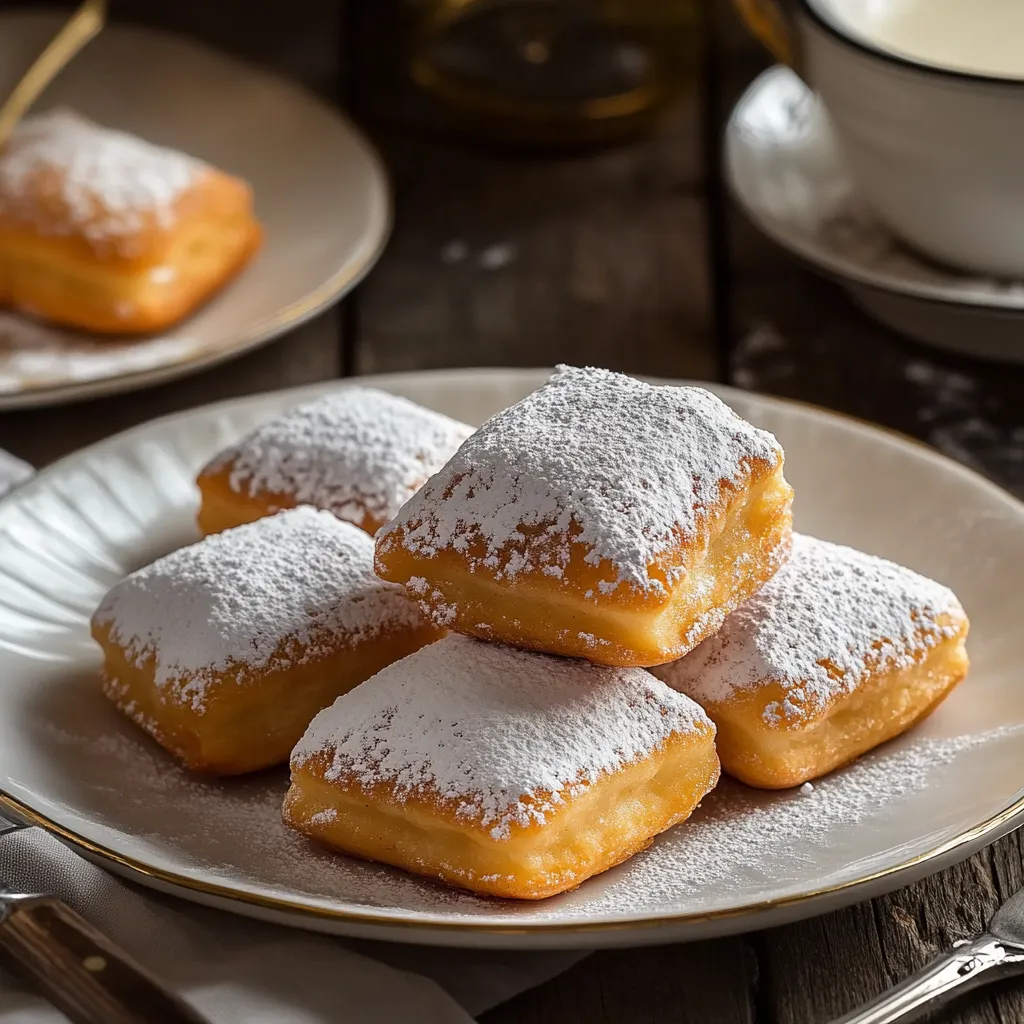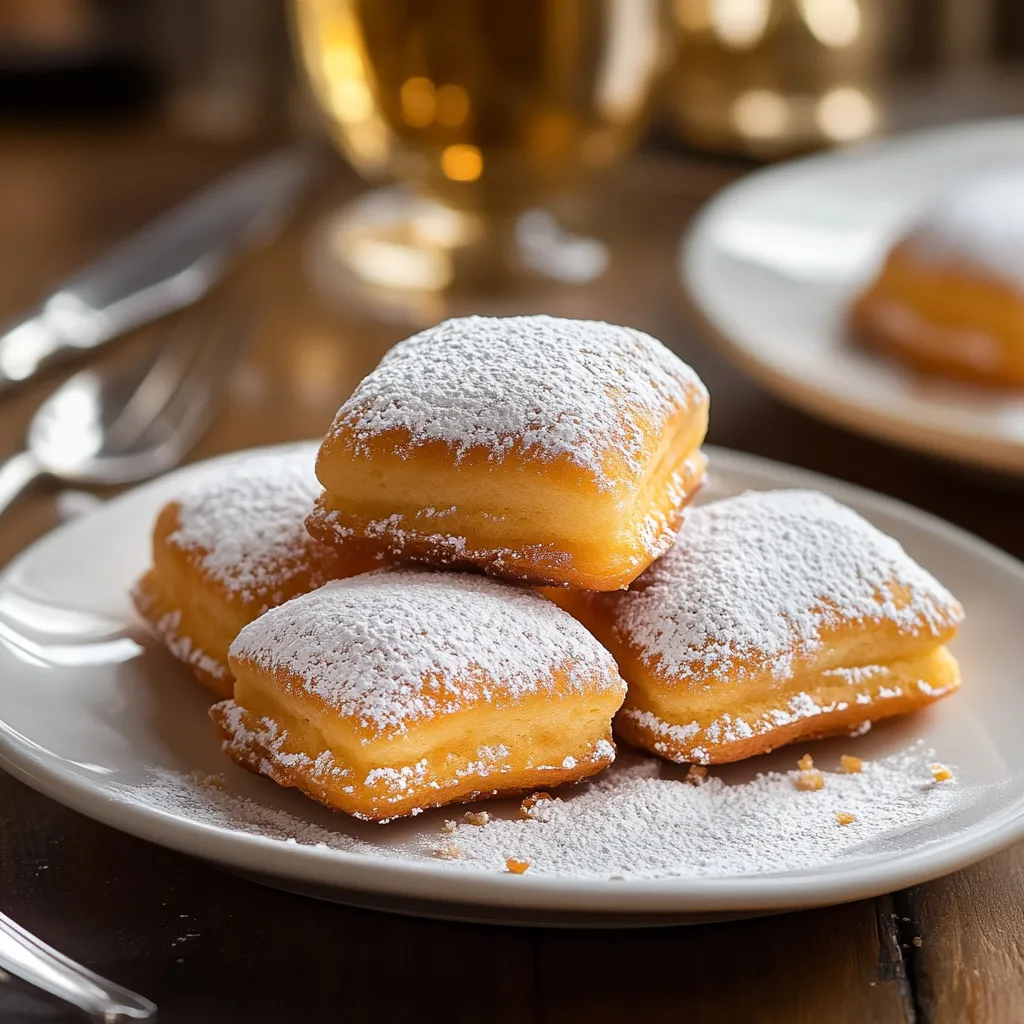 Pin it
Pin it
This classic vanilla French beignet recipe transforms simple ingredients into pillowy, sugar-dusted delights that transport you straight to a New Orleans café. Perfectly crisp outside with a tender, airy interior, these traditional French doughnuts make any morning feel special without requiring professional pastry skills.
I first made these beignets during a rainy Sunday morning when my family was craving something special but bakeries were closed. The kitchen filled with the most incredible aroma, and now they've become our monthly weekend tradition whenever we want to make ordinary mornings extraordinary.
Ingredients
- All-purpose flour: Creates the perfect structure for that signature pillow soft texture
- Baking powder: Ensures proper rise without the wait time of yeast dough
- Salt: Balances the sweetness and enhances the vanilla flavor
- Granulated sugar: Adds just enough sweetness to the dough without overwhelming
- Egg: Provides richness and helps bind everything together
- Vanilla extract: Brings warm aromatic flavor; look for pure extract if possible
- Whole milk: Creates tenderness; use full fat for best results
- Unsalted butter: Adds richness and helps achieve that melt-in-your-mouth quality
- Vegetable oil: For frying; choose one with a high smoke point
- Powdered sugar: For dusting; use generously for that authentic look and taste
Step-by-Step Instructions
- Prepare the Dry Ingredients:
- Whisk together two cups of all-purpose flour, one tablespoon of baking powder, a quarter teaspoon of salt, and one tablespoon of granulated sugar in a large bowl until thoroughly combined. Take care to break up any lumps in the flour for the smoothest possible dough.
- Mix Wet Ingredients:
- In a separate bowl, whisk one large egg until slightly frothy before adding one teaspoon of vanilla extract, half cup of whole milk, and two tablespoons of melted but not hot butter. Whisk until smooth and uniform in color.
- Combine Wet and Dry Ingredients:
- Pour the wet ingredient mixture into the bowl with your dry ingredients, using a wooden spoon or spatula to gently fold everything together. Avoid overmixing.
- Heat the Oil:
- Pour vegetable oil into a deep, heavy-bottomed skillet or Dutch oven to a depth of about 2 inches and heat to exactly 350°F.
- Fry the Beignets:
- Use a tablespoon or small cookie scoop to portion the dough, then carefully drop into the hot oil. Work in small batches to avoid overcrowding. Flip gently after 2 minutes and fry the second side for another 2 minutes until puffed and golden brown.
- Drain and Dust:
- Transfer the golden beignets to a paper towel-lined plate to drain. Immediately dust generously with powdered sugar while still warm.
- Serve:
- Arrange on a serving plate and enjoy immediately while still warm. Pair with strong coffee, hot chocolate, or milk.
 Pin it
Pin it
Vanilla is truly the secret star of this recipe. I once made the mistake of using imitation extract, and my family immediately noticed the difference. Now I splurge on Madagascar vanilla beans during special occasions, scraping the seeds directly into the milk before warming it slightly. The tiny black specks throughout the dough create conversation starters and elevate these humble treats to gourmet status.
The Perfect Temperature
Maintaining consistent oil temperature is perhaps the most crucial aspect of successful beignets. Too cool, and they absorb excess oil becoming heavy and greasy. Too hot, and they brown too quickly on the outside while remaining doughy inside. I recommend using a candy or deep fry thermometer to maintain 350°F throughout the cooking process. Between batches, allow the oil to return to temperature before adding more dough. This patience results in perfectly golden, evenly cooked beignets every time.
Make Ahead Options
While beignets are undeniably best fresh from the fryer, there are ways to prepare components ahead of time. The dry ingredients can be whisked together and stored in an airtight container up to a week in advance. The complete dough can be made up to 2 hours before frying and kept covered in the refrigerator. Unfortunately, fried beignets do not store well as they lose their signature texture, so plan to enjoy them immediately.
Cultural Heritage
Beignets have a rich history in French cuisine, dating back centuries before becoming the iconic treat of New Orleans. Traditional French beignets were often made with choux pastry, creating a more hollow center. The New Orleans style we know today evolved when French colonists brought their culinary traditions to Louisiana. In New Orleans, beignets are traditionally served in orders of three, completely buried under powdered sugar, and accompanied by chicory coffee.
 Pin it
Pin it
Enjoy these beignets while warm and savor their incredible texture. Perfect for weekend mornings!
Frequently Asked Questions
- → How do I know when the oil is at the right temperature?
If it bubbles immediately and dough rises gently, it's ready. Aim for 350°F (175°C).
- → Can I make the beignet dough ahead of time?
Yes, refrigerate covered dough up to 24 hours. Let sit at room temp 30 minutes before frying.
- → What’s the difference between beignets and donuts?
Beignets are square, airier, and served without a hole—more like puffy fritters than classic donuts.
- → Can I add other flavors to these beignets?
Yes! Add cinnamon, zest, or almond extract. Fill cooled beignets with pastry cream or jam if desired.
- → How do I store leftover beignets?
Keep in an airtight container for 1-2 days. Reheat at 350°F for 3-5 minutes to refresh crispness.
- → What’s the best oil for frying beignets?
Use neutral oils like canola, peanut, or vegetable oil for best frying results without off-flavors.
